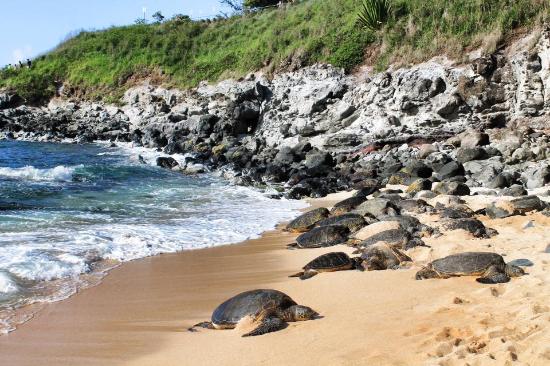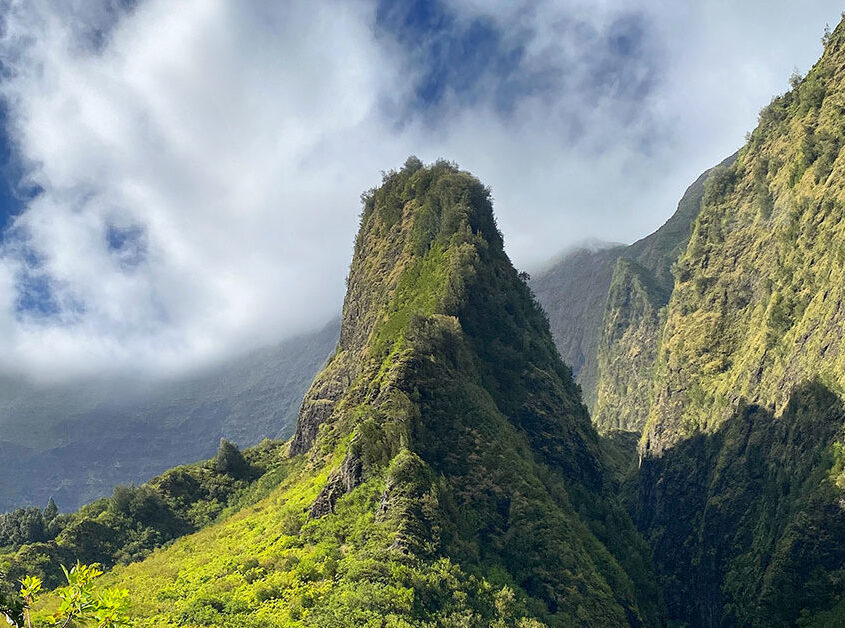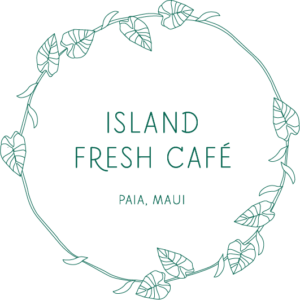
'iao valley state monument
ʻIao Valley State Monument is the place to be if you like the tropical flora of Hawaii. Take a walk on the ʻIao Needle Lookout Trail and Ethnobotanical Loop learn about the plants that Hawaiians brought. ʻIao Valley State Monument also has historical relevance as the site of the battle of Kepaniwai where Kamehameha I defeated the Maui army in 1790.

'iao valley state monument
ʻIao Valley State Monument is the place to be if you like the tropical flora of Hawaii. Take a walk on the ʻIao Needle Lookout Trail and Ethnobotanical Loop learn about the plants that Hawaiians brought. ʻIao Valley State Monument also has historical relevance as the site of the battle of Kepaniwai where Kamehameha I defeated the Maui army in 1790.
A thousand years ago, Hawaiians gathered at ‘Iao Valley to celebrate and honor the bounty of Lono, God of agriculture, during the annual makahiki festival. More than a hundred years ago, visitors began coming to witness the natural beauty of this valley.
Today, ‘Iao Valley is recognized as a very special place for both its spiritual value and spectacular scenery. It’s also very easy to access.
A thousand years ago, Hawaiians gathered at ‘Iao Valley to celebrate and honor the bounty of Lono, God of agriculture, during the annual makahiki festival. More than a hundred years ago, visitors began coming to witness the natural beauty of this valley.
Today, ‘Iao Valley is recognized as a very special place for both its spiritual value and spectacular scenery. It’s also very easy to access.
KUKA'EMOKU - IAO NEEDLE
During periods of warfare, warriors used the peak as a lookout. It was here that some of the Maui warriors retreated from the forces of Kamehameha I during the Battle of Kepaniwai.
Kuka’emoku is an erosional remnant. It is at the end of a ridge comprised of a denser dike stone. Streams and waterfalls eroded the softer rock around the dike stone.
The Lookout
When you climb the 133 steps to the top, you will be rewarded with a great 360 degree view of ‘Iao Valley and Wailuku
KUKA'EMOKU - IAO NEEDLE
During periods of warfare, warriors used the peak as a lookout. It was here that some of the Maui warriors retreated from the forces of Kamehameha I during the Battle of Kepaniwai.
Kuka’emoku is an erosional remnant. It is at the end of a ridge comprised of a denser dike stone. Streams and waterfalls eroded the softer rock around the dike stone.
The Lookout
When you climb the 133 steps to the top, you will be rewarded with a great 360 degree view of ‘Iao Valley and Wailuku
ka wai ola o kane - the living waters of kane
Iao StreamTrails skirt dramatic coastline or follow pooling streams to Waimoku Falls at the head of a densely forested valley. At Kipahulu you can get a sense of how people lived in old Hawai’i. Foundations of old village sites, cultural demonstrations, and a living taro farm are preserved and perpetuated.
ka wai ola o kane - the living waters of kane
Iao StreamTrails skirt dramatic coastline or follow pooling streams to Waimoku Falls at the head of a densely forested valley. At Kipahulu you can get a sense of how people lived in old Hawai’i. Foundations of old village sites, cultural demonstrations, and a living taro farm are preserved and perpetuated.
Na Wai Eha - The Four Waters of Maui
The streams of the valleys of Waikapu, Wailuku, Waiehu, and Waihe’e are known as the four waters. The fertile lands and abundant water made this area the largest agricultural system in Hawaii and a major population center of Maui.
Imagine this landscape 200 years ago. Kalo (taro) fields cover the valley floor with ‘auwai (ditches) diverting water from the streams to irrigate the planted terraces. The hale (houses) of the farmers dot the valley slopes while the hale of the fishermen line the shore of Kahului Bay. Haleki’i and Pihanakalani Heiau on the dune along ‘Iao Stream are the religious center of this very important area.
With Western contact, the landscape of the Wailuku Plain began to change. By the late 1800’s, much of the kalo was gone and fields of sugarcane irrigated with water from the four streams covered the plain.
Na Wai Eha - The Four Waters of Maui
The streams of the valleys of Waikapu, Wailuku, Waiehu, and Waihe’e are known as the four waters. The fertile lands and abundant water made this area the largest agricultural system in Hawaii and a major population center of Maui.
Imagine this landscape 200 years ago. Kalo (taro) fields cover the valley floor with ‘auwai (ditches) diverting water from the streams to irrigate the planted terraces. The hale (houses) of the farmers dot the valley slopes while the hale of the fishermen line the shore of Kahului Bay. Haleki’i and Pihanakalani Heiau on the dune along ‘Iao Stream are the religious center of this very important area.
With Western contact, the landscape of the Wailuku Plain began to change. By the late 1800’s, much of the kalo was gone and fields of sugarcane irrigated with water from the four streams covered the plain.
hawaiian history
Wahi Pano O Na Ali'i - Sacred Place of the Chiefs
The streams of the valleys of Waikapu, Wailuku, Waiehu, and Waihe’e are known as the four waters. The fertile lands and abundant water made this area the largest agricultural system in Hawaii and a major population center of Maui.
Imagine this landscape 200 years ago. Kalo (taro) fields cover the valley floor with ‘auwai (ditches) diverting water from the streams to irrigate the planted terraces. The hale (houses) of the farmers dot the valley slopes while the hale of the fishermen line the shore of Kahului Bay. Haleki’i and Pihanakalani Heiau on the dune along ‘Iao Stream are the religious center of this very important area.
With Western contact, the landscape of the Wailuku Plain began to change. By the late 1800’s, much of the kalo was gone and fields of sugarcane irrigated with water from the four streams covered the plain.
hawaiian history
Wahi Pano O Na Ali'i - Sacred Place of the Chiefs
The streams of the valleys of Waikapu, Wailuku, Waiehu, and Waihe’e are known as the four waters. The fertile lands and abundant water made this area the largest agricultural system in Hawaii and a major population center of Maui.
Imagine this landscape 200 years ago. Kalo (taro) fields cover the valley floor with ‘auwai (ditches) diverting water from the streams to irrigate the planted terraces. The hale (houses) of the farmers dot the valley slopes while the hale of the fishermen line the shore of Kahului Bay. Haleki’i and Pihanakalani Heiau on the dune along ‘Iao Stream are the religious center of this very important area.
With Western contact, the landscape of the Wailuku Plain began to change. By the late 1800’s, much of the kalo was gone and fields of sugarcane irrigated with water from the four streams covered the plain.
You can stop by The Island Fresh Café to grab one of our tropical fruit, drinks or maybe some Hawaiian food to have a wonderful day at Iao Valley:
You can stop by The Island Fresh Café to grab one of our tropical fruit, drinks or maybe some Hawaiian food to have a wonderful day at Iao Valley:
Thank you for interest in joining our community!
Suscribe with your email and recieve updates for the Island Fresh Café. We will get you know about our island Maui and what’s new at the Café! Discounts, specials and much more!
Thank you for interest in joining our community!
Suscribe with your email and recieve updates for the Island Fresh Café. We will get you know about our island Maui and what’s new at the Café! Discounts, specials and much more!
